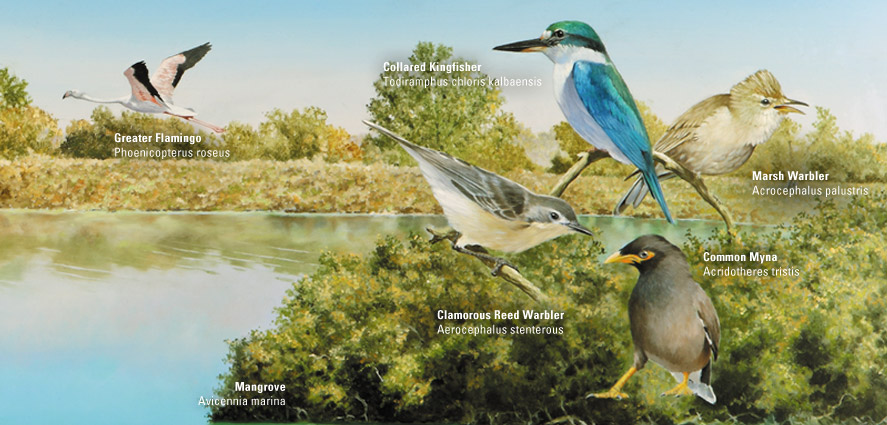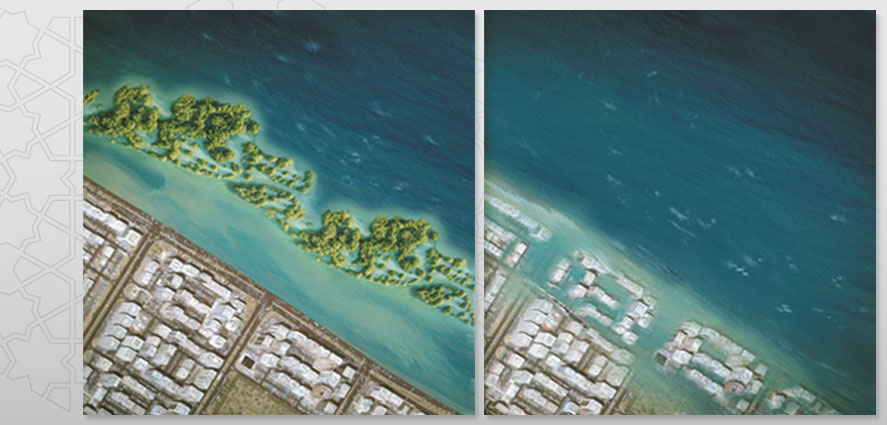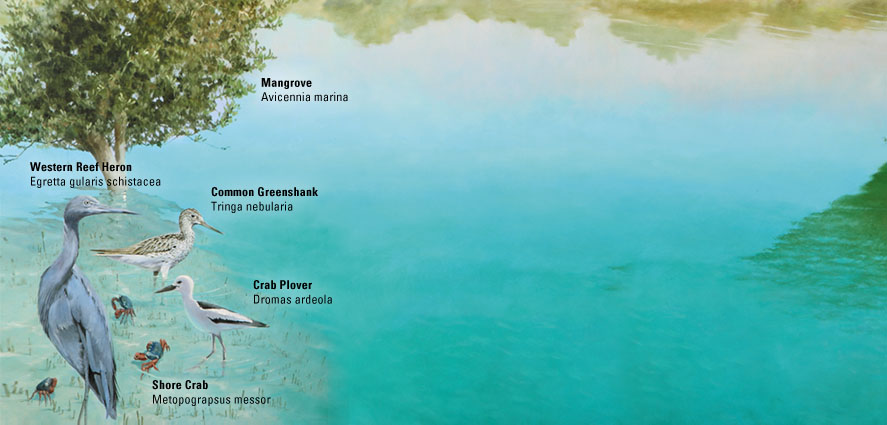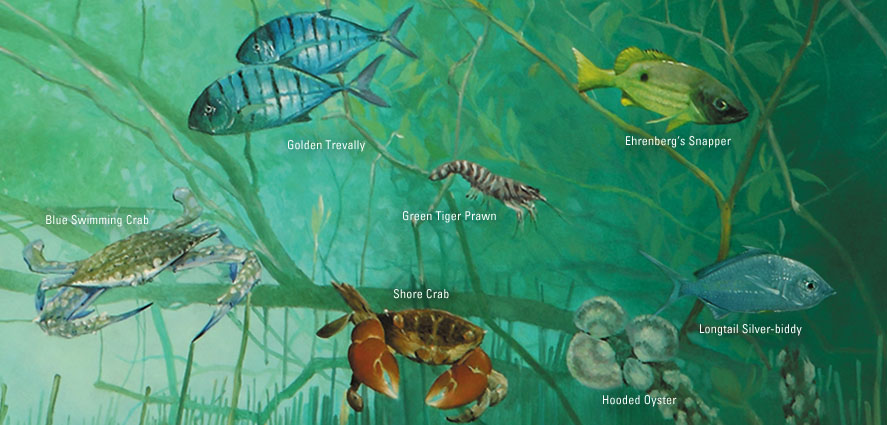
You are in :
Mangrove forests

Mangrove forests

Mangroves are forests of salt-tolerant trees that grow in the shallow tidal waters of some coastal areas of the Emirate of Abu Dhabi. They require slow water currents and plenty of fine, organic sediment in which to set their roots as well as protection from high energy waves. The muddy waters, rich in nutrients from decaying leaves and wood, are home to sponges, worms, crustaceans, molluscs and algae, and provide shelter for marine mammals and birds. Mangroves are essential fish nurseries and contribute to the vitality of commercial fisheries in the Emirate. The naturally-occurring species of mangrove (Avicennia marina) found in Abu Dhabi, locally called ‘Qurm', is the grey or white mangrove, due to the colour of the underside of its leaves. Technically, the term mangrove refers to a plant while the mangal is the plant community and habitat where mangroves thrive. The plants in the mangal can be diverse but all have special adaptations to overcome the problems of anoxia, a lack of oxygen in the continually water-logged soil; high salinity levels; and frequent inundation by the tides. While the Emirate may have scarce and limited areas of forest on land, it possesses significant mangrove forests around islands and sheltered coastal zones. While some of the mangrove stands have been recently planted, the majority are naturally occurring. Some areas of mangrove are under varying degrees of stress, especially close to coastal developments, due to dredging, sedimentation and altered flow regimes. In Abu Dhabi, the total area of mangrove forests covers seventy square-kilometres spread along 547 kilometres of shoreline.
Guardians of the Coast

Since mangrove forests are generally inaccessible due to their location in intertidal areas that are often comprised of very soft mud or sand, they are often seriously undervalued as important assets, not only in terms of biodiversity but also as protectors of the coast. With massive root systems, mangrove trees protect coastlines by absorbing and dissipating the force of large waves and storm surges, which can cause coastal erosion, property damage and even loss of life. This protective capacity was vividly demonstrated during the Indian Ocean tsunami in December 2004. Studies of coastlines following this disaster showed that areas with mangrove forests better survived the worst impacts of the massive waves, undoubtedly saving both fragile coastal habitats and, possibly, thousands of lives. Sadly, many mangrove areas along the Abu Dhabi shoreline have been lost to coastal development and urban expansion. More recently, efforts have been made to plant new forests and to preserve existing mangroves as a natural and resilient protector of the coast.
Adaptations for Survival

The bases of the trees are inundated daily by the tides and have to withstand a considerable amount of submersion. Mangroves have a unique appearance with numerous pneumatophores (respiratory or prop roots) protruding all around, often many metres away from the trunk of the tree. These root-like structures are basically ‘breathing tubes' or snorkels covered by pores or lenticels, allowing oxygen transport within the plant. Because of the excessive salt in their habitat, grey mangroves secrete salts directly from two glands at the base of each leaf. It is not unusual to see the leaves covered by salt crystals, hence the name grey or white mangrove. Since fresh water is strictly limited in the salty soils of the intertidal zone, mangrove plants limit water loss through the pores or stomata on the leaves by restricting the size of pores. Furthermore, they can reorient the leaves away from the harsh midday sun and limit water loss by evaporation.
Incredible Journey of a Mangrove Seed






From the earliest stages of life, mangroves display adaptability and the capacity for propagation and survival in an ever-changing aquatic environment. All mangroves produce buoyant seeds that float and disperse in water. Unlike land plants, most species of mangrove are viviparous with seeds that germinate while still attached to the mother plant. The seeds germinate and grow within the fruit or out of it, and once the propagules or healthy seedlings mature they drop into the water. So begins an often long and hazardous journey in search of a suitable location to flourish. Often, the seedlings are transported long distances by water currents. The propagules can survive desiccation and may remain dormant for many days, even up to a year, until they find a suitable environment. Once the propagule is ready to take root, it changes density so that it floats vertically rather than horizontally and is more likely to become lodged within the mud or roots. If it fails to take root, it alters density again and floats away on a continuing search for the best home.
Life on the Root

Mangroves support unique ecosystems where the mesh of roots provides a tranquil marine environment for many organisms, especially the young and vulnerable. Organisms can anchor themselves to the roots and simply wait for food and nutrients to sweep by on gentle currents. Where roots are permanently submerged, algae, barnacles, oysters, sponges and bryozoans take advantage of this anchorage to filter feed. Shrimps, lobsters and crabs – all with commercial value – use the muddy bottom as home while mangrove crabs improve the nutritional quality of the sediments with mulch by burying fallen leaves and debris.
Mangroves-Natural Filters
Since the underlying sediments of mangrove forests act as sinks for a variety of heavy trace metals found in seawater, mangrove removal disturbs the sediments and often leads to heavy metal contamination of surrounding habitats.

















